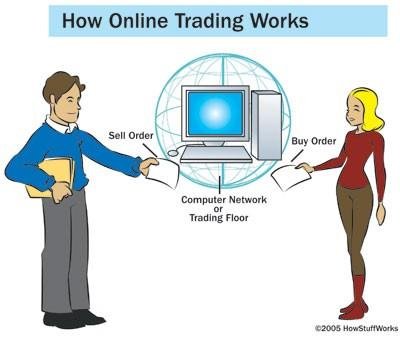
As the saying goes, 'it takes two sides to make a market'. The two sides concerned are:
Buyers, who usually believe an asset's value is likely to rise - known as 'bulls'
Sellers, who generally think an asset's value is set to fall - known as 'bears'
Bear and bull
The relationship between them powers the movements in market prices. Let's look at how that works.
Suppose you were buying a car – you'd look for the lowest price on the model you wanted. And if other buyers were thin on the ground you might strike a good deal. On the other hand, if you were trying to bag a rare and sought-after vehicle, you might have to pay the seller a high price.
In the same way, the balance of demand from buyers and supply from sellers influences prices in financial markets.
Supply and demand
How levels of supply and demand move prices
EXERCISE
Which way would you expect levels of supply and demand to push prices in these scenarios?
1/3: A company releases poor annual results
Please select the correct answer:
A✓Share price rises
B✓Share price falls
Check
Bid and ask prices
When you look at a quote for a financial asset, you'll generally see not one but two prices:
Bid price - the price you'll receive as a seller
Ask price - the price you'll pay as a buyer
The ask price is also known as the 'offer price'.
In a quote, the lower figure shown is normally the bid price and the higher is the ask price.
EXERCISE
Let's say you feel the euro is set to strengthen against the dollar, so you decide to buy EUR/USD. Your broker quotes a bid price of 1.23546 and an ask price of 1.23554. Which price will apply for your trade?
Please select the correct answer:
A✓1.23546
B✓1.23554
Check
The spread
So why do different prices apply for buyers and sellers?
The gap between the bid and ask prices occurs because buyers and sellers often have contrasting views about the value of an asset:
The bid price is the highest price at which a buyer is prepared to buy
The ask price is the lowest price for which a seller is willing to sell
The difference between the two prices is known as the 'spread', and also as the 'bid-ask spread' or 'bid-offer spread'.
The spread may also incorporate a broker's fee for handling the trade. The broker quotes clients a price slightly lower than the fundamental bid price or slightly higher than the ask price, keeping the difference to cover its costs.
LESSON SUMMARY
The balance between supply (sellers) and demand (buyers) drives price movements in the financial markets
The bid price is the price you'll receive as a seller, while the ask price (or offer price) is the price you'll pay as a buyer
The gap between the bid and ask prices is called the spread, and occurs because buyers and sellers often have differing views about the value of an asset
NICE POST
Downvoting a post can decrease pending rewards and make it less visible. Common reasons:
Submit
Thanks buddy this one is lesson 3of6 please read the other ones too and be kind to tell your friends and upvote. Many thanks.
Downvoting a post can decrease pending rewards and make it less visible. Common reasons:
Submit